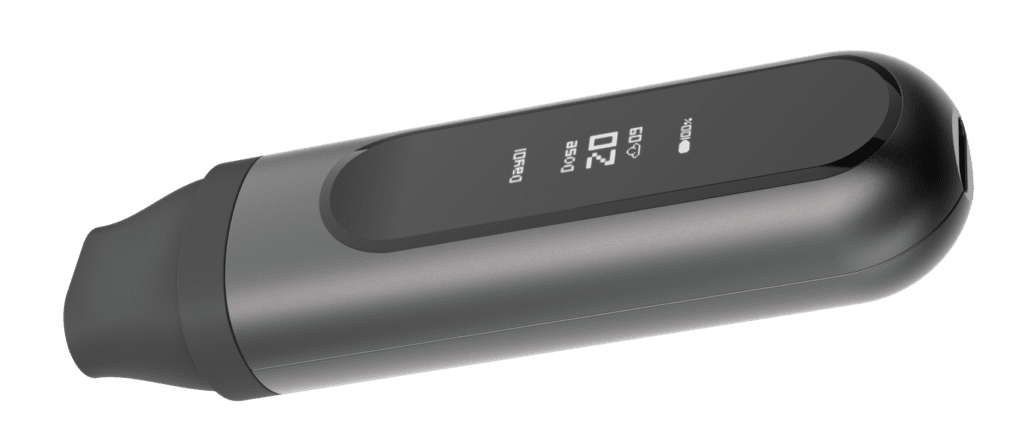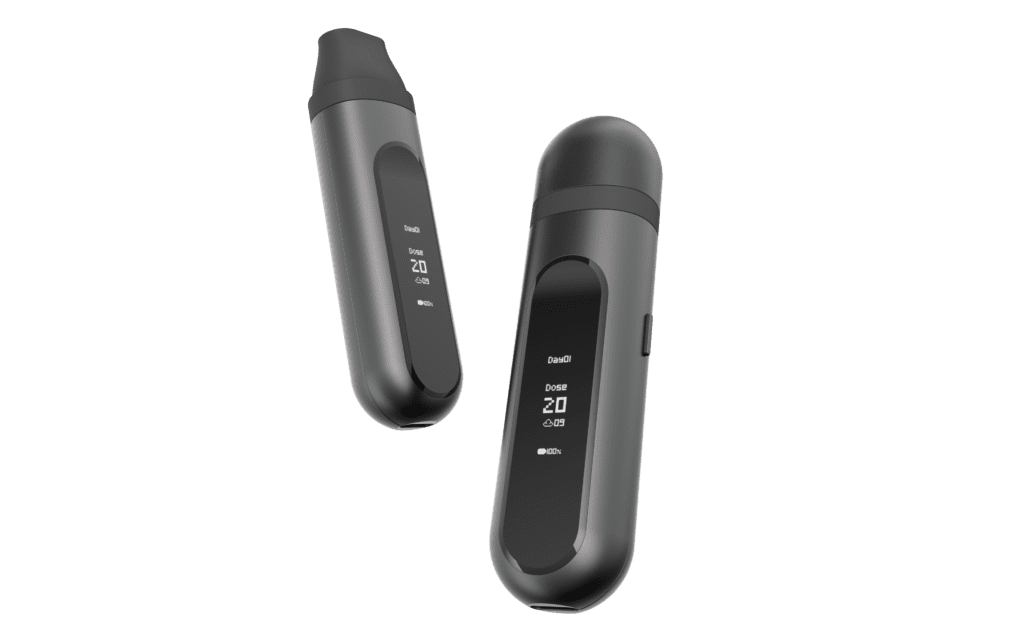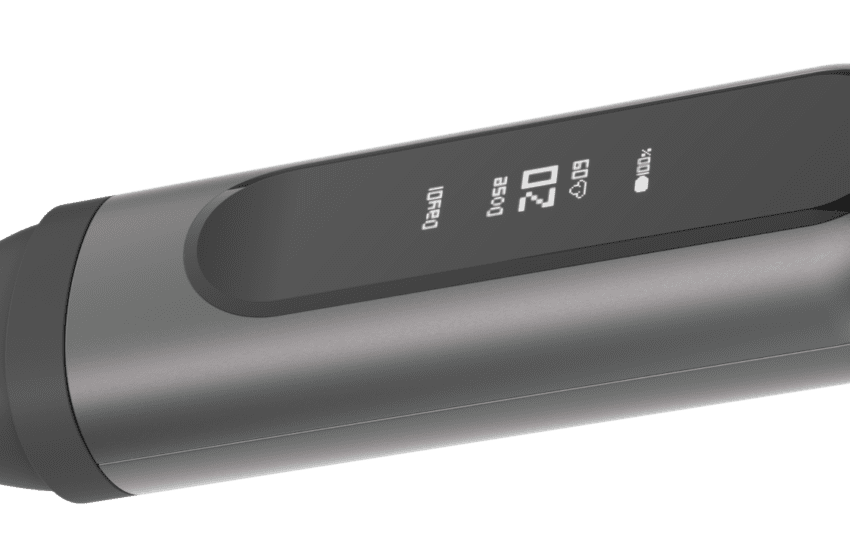
There may soon be a licensed medicinal inhaled nicotine product on the market if Qnovia finds success.
By Timothy S. Donahue
The story of the vaping industry tends to be dominated by two countries—the United States and the United Kingdom. In the U.S., the world’s largest vaping market, misinformation and a regulatory roller coaster continue to rattle the business of electronic nicotine-delivery systems (ENDS). Meanwhile, in the U.K., vaping products are being embraced as a harm-reduction tool to end the use of combustible cigarettes.
Elsewhere, the gamut of vaping regulations ranges from complete bans to minimal rules. There has not been any advocacy group, research project or product development that has been able to bring global regulators under one unified ENDS umbrella.
Many experts have said over the years that licensing ENDS as medicinal products could lend credibility to vaping products and their tobacco harm reduction potential. Approval from both the U.K.’s Medicines and Healthcare products Regulatory Agency (MHRA) and the Center for Drug Evaluation and Research (CDER), the drug approval division of the U.S. Food and Drug Administration, could provide consumers with confidence that ENDS have the potential to be an effective nicotine-replacement therapy (NRT) product.
Although several media outlets reported that Johnson & Johnson’s Nicorette QuickMist is the first medically licensed vaping product, it isn’t a vaping product. It’s a mist sprayed into the mouth and is not inhaled. One product, however, does have the potential to make the dream of a medicinal ENDS product a reality. U.S.-based Qnovia is presently working with both the CDER and the MHRA to bring its RespiRx nicotine-containing cessation device to market.
Qnovia’s goal is for RespiRx to be the first inhaled prescription smoking cessation therapy product, according to Qnovia CEO Brian Quigley. Instead of using heat to create vapor, the RespiRx device uses an orientation-agnostic vibrating mesh nebulizer. The aerosolizing engine is nothing like a traditional e-cigarette that heats a coil to atomize nicotine based in PG and/or VG.
RespiRx is activated when a user inhales on the device. To aerosolize the nicotine, it sends an electrical current that causes the perforated piezo mesh to vibrate more than 100,000 times a second. “It’s that vibrating action of the mesh that then forces the liquid to the holes, creating an aerosol that appears vapor-like, allowing it to be inhaled,” says Quigley. That, he says, is fundamentally different from a traditional e-cigarette product, where the heating process can create undesired thermal byproducts.
RespiRx uses proprietary software to deliver a precise dose of nicotine. Every time it’s activated, the device fires for three seconds and delivers a targeted dose of the drug. The base is reusable and serves as the housing for the battery and software. The RespiRx nebulizer sits within the pod that houses the nicotine drug product.
“The nebulizing unit (cartridge) gets replaced by the patient every one to two days. That interface means that the patient doesn’t have to clean the nebulizer,” explains Quigley. “The biggest challenge with other vibrating mesh products is that they require cleaning if used over an extended period. We’re mitigating that through the design of the interface. There is no cleaning required. We do believe that this will result in RespiRx having a very long use life.”
Mario Danek, Qnovia’s founder and chief technical officer, agrees that eliminating the cleaning requirement was a priority. “The idea was to create a technology that emulates the form factor of a successful high-adoption consumer product but that is imbued with technologies that would pass CDER’s stringent standard for safety—combined with Qnovia’s purposeful design features, it should bring patient adherence and quit rates to new highs, which historically have been found lacking in NRT,” he says. “Additionally, from a drug delivery platform perspective, those CDER-aligned device safety requirements are just as imperative to Qnovia’s API expansion strategy into other indication areas.”
RespiRx is a “step-down” therapy, like many NRT products. However, instead of buying different pods with varying levels of nicotine, Qnovia’s device has a dosage-monitoring system programmed into the device. Uniquely, the use regimen is determined based on how much a smoker is smoking, says Quigley. For example, a one-pack-a-day smoker would start with 20 doses per day. The two-pack-a-day smoker would start with 40 doses per day.
“Then the device will, over the 12 weeks, gradually reduce the available number of doses to that patient. It is a much more manageable step-down over the 12 weeks, unlike currently available cessation methods. And the device itself will prevent the patient from using more than they’re supposed to use,” says Quigley. “Patients would also have the on-device LCD screen interface to help them understand how to use their doses. That, too, is another benefit of our product versus the existing smoking cessation therapies.”

Every smoker smokes differently. One smoker may have their first cigarette after their morning coffee. Another may have to light up the moment they wake up. Quigley says that Qnovia patients can use their daily doses to replace each occasion where they’re used to having their combustible cigarette. They have hand-to-mouth action. They get reinforcements to those behavioral cues that smokers have become accustomed to.
“With a piece of gum or a patch, if you have a patch on and you’re having your cup of coffee and you’re fighting through your cravings, it just doesn’t work. I think there’s a lot of benefits to this type of therapy to really help the patient replace their occasion when they need to smoke and then stick with that 12-week step-down program,” says Quigley.
Choosing sides
In the U.K., Quigley says the process to become a medicine is less challenging than in the U.S. “Whereas in the U.S., we have to go through a pretty rigorous process and really our competition is once that patient decides they want to try to quit smoking [and] we’re competing against the existing NRTs, which every smoker has tried. Consumers know that none of them are as effective as an inhalable product,” he says.
If RespiRx decided to be a tobacco product instead of medicine in the U.S., the device may have already been on the market. The FDA’s premarket tobacco product application process is less stringent than the CDER approval process. However, drugs gain approval all the time, while the FDA has approved only 23 vaping products for market, and most of those are technologically obsolete. An NRT comes with less baggage than a tobacco product, and as far as the FDA’s Center for Tobacco Products (CTP) is concerned, vaping products are tobacco products.
“I think the unfortunate reality facing reduced-risk products is that FDA on the CTP side—they’re in a very tough spot. The industry is kind of stuck in the middle where, yes, the FDA needs to review these applications and approve reduced-risk products, but over the long term, I think FDA will ultimately continue to constrain that industry,” says Quigley. “Ultimately, I think the long-range path of CTP will be to continue to tighten regulations on all tobacco products. That would be a very challenging environment. That space presents a lot of risk.”
While a much longer and more expensive process, Quigley says the CDER standard is straightforward. It’s about safety and efficacy. It’s a balance between scientific risk and regulatory risk. When the CDER asks a question, it usually requires a study to answer. Studies can be very expensive. “I think that another potential challenge will be that we’ll generate data, and we expect the FDA will be very conservative,” he says. “They could ask us questions that require us to generate additional data that we didn’t think we had to generate. But our view is that we’re going to do this right. If they need data, we’re going to generate it for them. The biggest risk is really the time and money to get through the approval process … but I do believe that we are taking a proactive scientific approach.”
For Qnovia, the premise that the CDER must be more directly involved with a company working on a new drug than the CTP needs to be when working with the e-cigarette industry was important. Quigley says that he also believes that having less harmful vaping products on the market available to consumers is important in the fight to end combustible tobacco use. He says having e-cigarettes available to former or current smokers who want to continue to have nicotine be part of their life is important. But for Qnovia, its client base is those smokers who are saying they want to end their addiction to nicotine.
“CDER, for example, has timelines it must adhere to. When we give CDER information, they stick to these timelines. I think it’s a more responsive center than CTP needs to be with e-cigarette manufacturers,” explains Quigley, adding that the company likes the engagement opportunity with the CDER to advance a potential breakthrough therapy for smoking cessation. “The conversation we have with FDA on helping to provide more effective cessation tools is very different than a conversation a tobacco company would have. I do think that we have the opportunity to be viewed as an ally with FDA in their fight against smoking. We’re trying to help solve a problem that is important.”

One of the main issues that the FDA has with vaping products is heat. E-liquid is heated, and that heating process has the potential to create harmful and potentially harmful constituents in the vapor. Quigley says that this is why he doesn’t ever see a vaping product with an atomizer that heats the liquid to vaporize being approved as an NRT product. While e-cigarettes are surely less harmful than combustible cigarettes, there are still potential constituents in the e-liquid aerosol, and the CDER would have a problem approving a vaping product with the potential to have those constituents.
Qnovia is preparing to submit its investigational new drug application to the FDA. It also expects to begin human clinical trials this year, according to Quigley. Ultimately, Qnovia’s goal is to have its new drug application, its final drug application, submitted to the FDA in 2025.
“The IND, basically, is where we give them all of our safety data, all of our drug manufacturing and device characterization data. And after that application is submitted, once the FDA gives us the approval, then we can begin human clinicals,” says Quigley. “And we have a phase one, phase two and phase three human clinical plan that we will have to execute.”
A pharmaceutical company seeking FDA approval to sell a new prescription drug must complete a five-step process: discovery/concept, preclinical research, clinical research, FDA review and FDA postmarket safety monitoring. Importantly, a major difference between the CTP and the CDER pathways to market is that drug applicants have safety standards that e-cigarette manufacturers don’t have. For example, for RespiRx, the container that holds the nicotine needs to be sterilized. It needs to be filled aseptically in an ISO 5 cleanroom environment. The vaping industry would only require an ISO 6-certified lab.
“I think another element is our airpath safety. It’s something that FDA really cares about on the drug side. When the patient is actually inhaling on the device, not only the aerosol but even the breath path, where they’re drawing air from, has to be totally sealed off and isolated from electronics and other materials,” says Quigley “That’s not the case with standard e-cigarettes. Everything, the breath-activation function and all the electronics have to be sealed off entirely from the drug-containing reservoir and the patient’s airpath. These are more stringent safety requirements that have forced us to do extra work from a design perspective and a safety perspective.”
Forward thinking
Qnovia was founded in 2018 in Los Angeles by Danek as Respira Technologies. Danek invented the underlying technology. He rebranded the company as Qnovia last year. The company also moved to Richmond, Virginia, in part because that state offers a more business-friendly environment, according to Quigley, whose tobacco career included a six-year stint as CEO of Altria’s U.S. Smokeless Tobacco Co. subsidiary.
In addition, many of the partners the company works with are on the East Coast. Qnovia contracts with a Boston manufacturer to make its device and a firm in Pennsylvania to create the medicine administered through the device.
One controversial aspect of e-cigarettes is unlikely to be a problem for Qnovia: The role RespiRx is to play in a medical context offers an opportunity to make use of flavors. Quigley says flavors could potentially help a smoker make the transition from combustibles and stick through the therapy and ultimately quit.
“I think that the lens is those flavors; it just becomes a safety question. Which is, you just have to make sure that whatever flavors you wanted to include, you’re actually generating the safety data to support new questions of safety by including those flavors. You have to check the safety box,” says Quigley. “E-cigarettes or e-vapor products are a different experience than what our smoker is used to, and flavors play or can play an important role in helping smokers switch to that reduced-risk platform.
“There’s also a lot of data that show that flavors are an important part of helping smokers move to reduced-risk products. But now the industry has been put in a very tight, constricting box. Over time, hopefully, that will kind of correct itself, but it’s going to have to happen with data. I think that the industry understands that—regulators and public health officials look at flavors as a youth appeal issue.”
The industry now must figure out how to ensure that it’s not creating a youth appeal issue but still creating a product that is going to be appealing to a smoker trying to switch to reduced-risk products, according to Quigley. “I think it’s going to be a long, slow road, but vapor products will continue to be a part of the reduced-risk product landscape in the U.S., but I think it’s going to be challenging,” he says.
RespiRx is expected to hit the market as a prescription-only treatment. Qnovia is also interested in exploring how the technology can be used for asthma, pain management, vaccines and other applications. As far as using synthetic nicotine, Quigley says it is not out of the question but says he is concerned that currently, the FDA doesn’t know enough about synthetic nicotine to be able to approve a synthetic product.
“We’re using pharma-grade nicotine. It is tobacco derived. I think with synthetic nicotine, the FDA may have lots of questions whereas they have a deep body of evidence and understanding of tobacco-derived nicotine,” says Quigley. “However, if there was data to show that synthetic nicotine is safer because it in no way can have any kind of nitrosamines, for example, it’s something we could consider in the future with strong safety data.”


